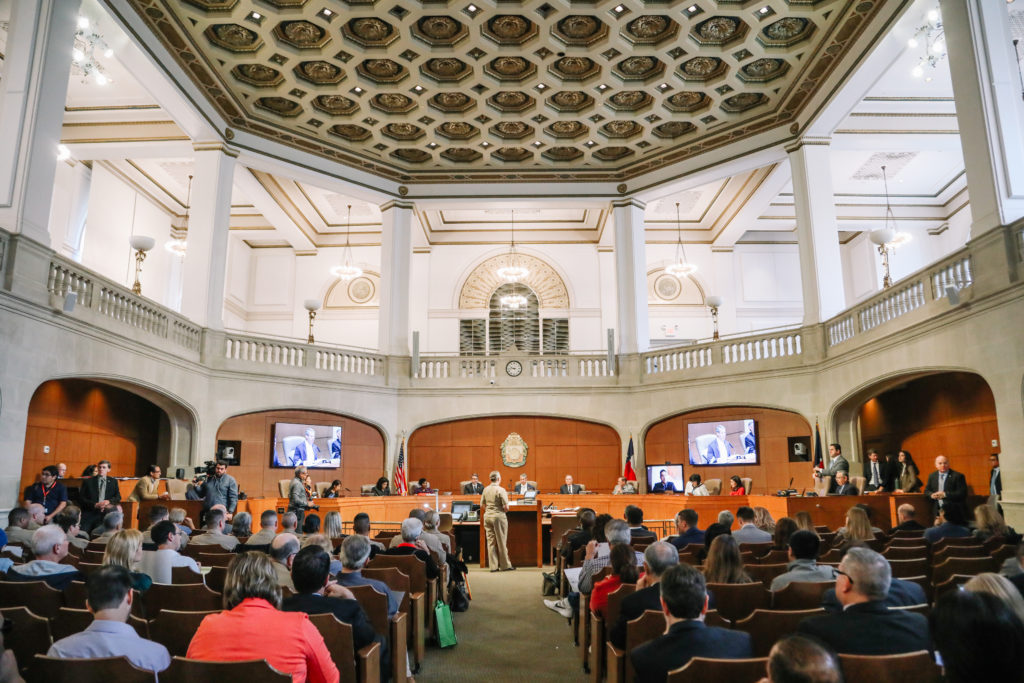Since the COVID-19 crisis hit the local community, “equity” is everywhere. Dozens of education leaders have signed a pledge for equitable recovery, San Antonio’s community foundation reinforced its commitments to equitable grantmaking, and the City of San Antonio’s COVID-19 Community Recovery and Resiliency Plan, a $191 million effort, identifies equity as one of five guiding principles.
These commitments have the potential to change people’s lives by ultimately producing policies, funds, and services that account for the different histories and needs of San Antonians. That is the very definition of equity.
“Equity” is everywhere in the collective discourse across many institutions, and yet, race is largely missing from the conversation. As we mourn the loss of George Floyd, Breonna Taylor, Tony McDade, David McAtee and the countless other Black lives lost to police violence across the United States, we know that race matters.
In our work, partnering with more than 160 multi-sector organizations, we run into a common assumption that San Antonio, by nature of being a “majority-minority” city, should focus on income over race. Meanwhile, “Northside,” “Southside,” “Eastside,” and “Westside” serve as coded language for race. “Underserved,” “vulnerable,” “impoverished,” and “low-income” become proxies for people of color. Even when not explicitly talking about race, it remains the elephant in the room.

Translating equity into policies, budgets, and services that genuinely serve all San Antonians requires that multi-sector institutions start with and agree to: (1) effectively talk about race and (2) track and analyze data by race.
On March 13, Metro Health reported the first known case of COVID-19 in Bexar County. The first demographic data, sex (“male” and “female”) and age group, of known cases were released on March 20. Zip codes where known cases were most prevalent were reported beginning March 28. Finally, on April 7, twenty-five days after reporting the first known case, Metro Health began reporting the race/ethnicity of known cases and deaths. (Hospitalization characteristics and medical visit types have yet to be reported by race/ethnicity.)
On May 28, The Rivard Report’s The Curve, a daily rundown of the impact of COVID-19 on San Antonians, addressed “How Coronavirus affects Communities of Color.” While correctly identifying the disproportionate rate of death for Black people, the Rivard Report offered the following caveat: “Although black (sic) and Latino residents have been contracting the virus at higher rates, the gap isn’t as wide when you look at the overall caseload data, a larger and thus more indicative dataset.”
This analysis draws focus from the most critical point: Black San Antonians are disproportionately dying from COVID-19. It further implies that the disproportionate number of deaths among Black San Antonians is somehow incidental. Black people make up 7.2% of Bexar County’s population, according to U.S. Census, and 23% of current COVID-19-related deaths. This gap, however, is not unique to San Antonio. According to the COVID Racial Data Tracker, Black people make up 13% of the U.S. population and 25% of deaths due to COVID-19 where race is known.
In looking at the breakdown of known cases by race/ethnicity, it is true that known cases are more comparable to the race/ethnicity of Bexar County’s demographics than deaths. What is lacking in this analysis, however, are critical questions, like: “Who is being tested?“ “How is healthcare and treatment administered across demographics?” “Who is able to stay at home safely and work?” Not asking these questions harms the ability to design responsive policies, budgets, and services. And this work is urgent. Black San Antonians are dying from COVID-19 at a rate of three to one.
The inability to responsibly talk, write, collect, or analyze racial data is not the sole problem of one City department, one journalist, or even one media outlet. It is part of a larger, more pervasive, historical, and harmful narrative that race does not matter, and any life outcomes, disparate by race, have to do with the individual behaviors of people of color. When we fail to effectively talk about race in the context of systems, this dominant narrative goes unchallenged.

Focusing on individual behavior ignores the compounding effect of highly interrelated systems—healthcare, housing, education, and the economy, for example—that serve people of color differently and, therefore, result in different life outcomes. As a community, we cannot positively impact people’s lives without understanding how these systems reinforce inequity and institutional racism.
Every year, SA2020 publishes a Community Impact Report, transparently reporting progress toward San Antonio’s Community Vision. This is measured by 62 indicators, largely prioritized by the community during the original visioning process in 2010. In the 2019 Community Impact Report, released earlier this year, SA2020, in partnership with CI:Now, disaggregated more than one-third of these indicators by race, gender, age, zip code, and City Council District where available. Across the spectrum, from digital access, to per capita income, and healthcare access, the data overwhelmingly shows that San Antonio’s policies, budgets, and services, across sectors, fail to adequately serve Black and Latino San Antonians.
This reality is only compounded by COVID-19.
Health insurance covers Black San Antonians at the lowest rates of 79.6%. Latinos are covered at 84.8%, and White San Antonians are covered at 91.3% (American Community Survey, 2018). We know that lower rates of health insurance coverage puts communities at greater risk for preventable or treatable illnesses.
As the community shelters at home to mitigate the spread of COVID-19, housing is unaffordable for one in two renters in San Antonio. At a rate of 56.7%, Black renters pay more than 30% of their income toward rent. Fifty-three percent of Latino renters, and 51.1% of White renters are burdened by rental costs (American Community Survey, 2018). This can lead to displacement and often prevents older San Antonians from successfully aging in place.

Digital access, particularly now, serves as a lifeline to education, employment, healthcare, unemployment benefits, financial planning, connectivity to loved ones, and news about the crisis. Digital access includes not only a computer and Broadband Internet, but the neighborhood infrastructure that makes connectivity possible. Black San Antonians are provided the lowest rate of digital access, with 79.6% of Black households with computer & broadband internet compared to 89.4% of Latino households and 91.3% of White households (American Community Survey, 2018).
The Bexar County Sheriff’s Office released a COVID-19 Mitigation Plan on March 13, 2020, which allowed releasing people held on nonviolent offenses—like a charge of criminal trespass, allegedly committed by a person without a home. This resulted in a near 19% reduction of the jail population. Bexar County Jail population by race shows that Black people are held at higher rates than Latino or White people, at 713 per 100,000 compared to 257 per 100,000 Latinos and 417 White people (Vera Institute, 2017).
SA2020 tracks all of this data because in 2010 thousands of San Antonians envisioned a city that would be among the healthiest and safest in the nation, renowned as the best city to raise a family, known for its cohesive and connected neighborhoods, with a highly educated and qualified workforce.
The last decade of progress in San Antonio—declining teen birth rate, increased high school graduation rate, improvement in early childhood education—has shown us that change occurs when we leverage our individual leadership toward a collective goal and craft targeted, cross-sector strategies to reach it. And we know that there is more work to do. Disaggregated data across each of these areas show progress across race/ethnicity and still show a gap between students of color and White students.
Holding equity as a personal value does not equate to having the skills to operationalize equity. Designing targeted policies, budgets, and programs that advance equity, like any other skill, requires training and practice, alongside commitment to contextualizing race. We developed a multi-sector guide to understanding how efforts can be shifted and strengthened to better serve San Antonians.
As individuals, we must consider the reach of our individual spheres of influence—as policymakers, philanthropists, teachers, doctors, nurses, journalists, parents, and voters—to advocate for policies, allocate resources, communicate with one another, ask critical questions of disaggregated data, examine how inequities are reinforced, and lead everyday acts of service to show that we meant it when we wrote in San Antonio’s Community Vision: “We are all responsible for our collective well-being.”
Additional resources:
Centers for Disease Control & Prevention’s COVID-19 in Racial and Ethnic Minority Groups
Center for Social Inclusion’s Talking About Race Toolkit
Race Forward’s Race Reporting Guide
SA2020’s 2019 Impact Report Call to Action
SA2020’s Guide to Multi-Sector, Targeted Interventions During COVID-19
SA2020’s Recommendations for Collecting Inclusive Demographic Data

